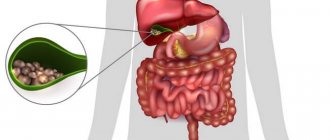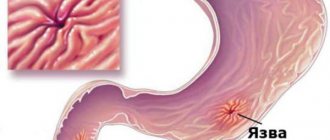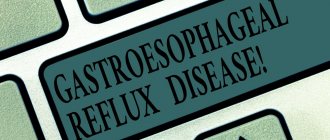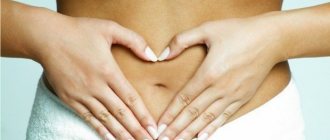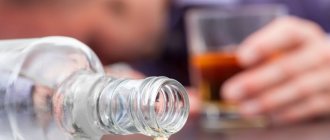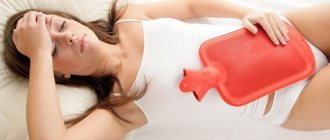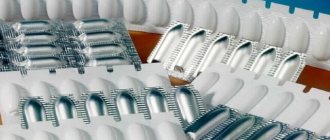Concept and types
Gallbladder dyskinesia is understood as a violation of the outflow of bile, after which metabolic processes and the functioning of the gastrointestinal tract change dramatically. Indigestion occurs due to the release of more or less bile into the intestinal lumen. Constantly functioning, the liver secretes bile during the digestive process, which enters the bladder.
The development of biliary dyskinesia (BDT) is associated with insufficiently intense contractions of their walls, as well as secondary pathologies acquired throughout life. The disease comes in two forms:
- Primary. It occurs due to stressful situations, hormonal imbalances, and abnormalities in the development of the gallbladder and ducts. It is difficult to diagnose, since it may not be detected on ultrasound; only when signs of the disease appear do structural changes appear.
- Secondary. A more complicated form of biliary tract pathology, which is accompanied by gastritis, liver cirrhosis, diabetes mellitus, colitis, cholecystitis, and ulcers. The secondary form is visualized in detail using an ultrasound machine.
Depending on the causes of development, dyskinesia occurs:
- Hypokinetic. The pathology affects people after 50–55 years of age, while the walls of the gallbladder are reduced in smaller quantities and it is difficult for bile to exit into the duodenum. This type of gallbladder dyskinesia is characterized by aching, painful sensations on the right side, and bitterness in the oral cavity.
- Hyperkinetic. The opposite of the hypokinetic type, it is accompanied by a very frequent release of bile into the intestine, which causes severe spasms. The disease can occur in young men, children, and girls during the menstrual cycle. Symptoms are belching, flatulence, constipation, nausea.
In rare cases, there is a combination of hypotonic and hyperkinetic types, which combines the symptoms of the two groups. In parallel with the inflammatory process, fever appears in children and adults.
How to treat biliary dyskinesia?
Treatment of biliary dyskinesia is carried out comprehensively and includes: drug therapy, diet therapy, and physiotherapy. Most often, treatment occurs on an outpatient basis.
The choice of drug treatment depends on the form of dyskinesia.
The hyperkinetic form of dyskinesia is treated with antispasmodics and analgesics. To improve the flow of bile, choleretic drugs are prescribed. Patients with hyperkinetic-hypertensive biliary dyskinesia are prescribed M-cholinergic drugs (atropine sulfate, metacin), xanthines (sufilin, theophylline), cholespasmolytic drugs (no-spa, papaverine hydrochloride). Patients are recommended to drink water - Truskavets and Zbruchanskaya "Naftusya", Morshynskaya No. 6 in a dilution of 3.5 g/l (sulfate-chloride-sodium-magnesium-potassium) - warm or hot, 100-150 ml 3-6 times a day day 30 minutes before meals. Such mineral waters reduce the tonic tension of the sphincters of the biliary tract, help normalize the motor function of the gallbladder and at the same time stimulate choleresis (production of bile by the liver).
Electrophoresis of papaverine hydrochloride or platyphylline hydrotartrate on the area of the right hypochondrium, as well as applications of ozokerite, are effective for hyperkinetic-hypertensive dyskinesia of the biliary tract.
In the treatment of patients with hypokinetic-hypotonic biliary dyskinesia, on the contrary, thermal procedures (applications of ozokerite, peloids) are contraindicated. Patients are recommended cholekinetic agents - magnesium sulfate, olive oil, sorbitol, xylitol. Within 5 minutes after ingestion, the sphincter of Oddi relaxes and the gallbladder contracts. These products can also be used for duodenal intubation (20 g of xylitol per 50 ml of water). Such patients are shown mineral waters with high mineralization - Morshynskaya No. 6 in a dilution of 14 g/l in a warm form, 150-200 ml 3 times a day 30 minutes before meals.
In case of severe hypotension of the gallbladder, to enhance the gallbladder reflex during meals, it is recommended to drink Morshyn mineral water of source No. 6 at a dilution of 14 or 7 g/l 1.5 hours before and 30 minutes after. The hypotonic form requires the use of drugs that improve gallbladder motility and bile acid preparations.
Physiotherapeutic methods of treatment include: UHF, microwave, paraffin, neck massage, electrophoresis, inductothermy.
Effective for hypokinetic-hypotonic dyskinesia of the biliary tract, magnesium and potassium electrophoresis on the area of the right hypochondrium - transversely from the anode, current strength up to 10-15 mA, duration 20 minutes, every other day, 8-10 procedures per course of treatment. Such patients are also shown Bernard currents and electrical stimulation (faradization) of the right phrenic nerve.
For biliary dyskinesia, hydropathic procedures (circular, fan-type rain shower) should be widely used; warm (36-37 ° C) baths lasting 20-30 minutes every other day are indicated, for a course of treatment 8-10 procedures. All patients with biliary dyskinesia are prescribed exercise therapy in a training mode. Swimming for 5-15 minutes at a moderate pace, with rest intervals every 1-3 minutes, is especially beneficial.
Also effective are 3-4 single transduodenal siphon lavages of the duodenum with warm physiological sodium chloride solution and low-mineralized mineral water.
To eliminate stagnation of bile in the biliary tract with hypokinetic-hypotonic dyskinesia, tubeless drainage of the biliary tract is recommended 1-2 times a week - tubage. To carry out tubage, cholecystokinetic agents are used: Barbara salt (20-30 g of salt per 100 ml of hot water) or olive oil (30 ml), or xylitol (10-20 g per 50 ml of hot water) and the like. After using one of these remedies, the patient is placed in bed for 1-1.5 hours with a heating pad on the right hypochondrium.
Correctly structured, pathogenetically substantiated treatment of patients with biliary dyskinesia can prevent the development of the inflammatory process and stone formation in the gallbladder. On the other hand, for chronic cholecystitis, cholelithiasis and chronic hepatitis, treatment should be carried out taking into account the nature of the concomitant biliary dyskinesia.
Clinical manifestations
Symptoms with the development of biliary dyskinesia manifest themselves in different ways, it all depends on age, the degree of neglect of the disease, and the number of concomitant pathologies, but the doctor will make an accurate diagnosis after a thorough examination.
General symptoms:
- The main symptom of any type of disease is pain. In the hypokinetic type, it is dull and does not have precise localization. With the hyperkinetic type, sharp spasms are felt, acute and very painful on the right, but extending to the left side and back.
- Nausea is almost always present when there is a malfunction of the gallbladder ducts, but most often it occurs simultaneously with colic. A feeling of nausea occurs after eating, when there is a feeling of heaviness from overeating or when there is a dietary disorder.
- The problem of biliary dyskinesia can be identified by the lack of appetite, and bile is its direct stimulator.
- Loss of extra pounds due to disruption of the gastrointestinal tract, when vitamins and beneficial microelements are not absorbed in the intestines.
- Feeling of a bitter taste in the mouth.
- Chronic constipation occurs due to poor breakdown of food, which moves slowly through the intestines.
- Diarrhea occurs when the diet is not followed, immediately after eating.
- Dyskinesia is accompanied by obesity when the disease is in an advanced stage. The process of breaking down food in the intestines occurs faster, which provokes the growth of adipose tissue.
- Belching and bloating.
- Sweating.
- Sleep disturbances and irritability.
Some of the listed symptoms are characteristic only of a certain type of bile duct dyskinesia. For example, the hypertensive type is characterized by rapid heartbeat, fatigue, and headaches.
Which doctors should you contact if you have biliary dyskinesia?
- Gastroenterologist
Multi-stage duodenal intubation helps in diagnosing biliary dyskinesia; it is performed in the morning on an empty stomach.
Thus, multi-stage duodenal intubation makes it possible to distinguish five phases and diagnose such variants of biliary dyskinesia.
- The first phase, or choledochus phase, lasts 10-15 minutes, during which 15-20 ml of the contents of the common bile duct and duodenum are obtained through the probe.
- The second phase, or the phase of the closed sphincter of Oddi, lasts 3-6 minutes, at which time the release of bile from the free end of the probe stops. The duration of the second phase is more than 6 minutes, indicating hypertension of the sphincter of Oddi.
- The third phase, or phase “A” bile, lasts 2-5 minutes, when 3-5 ml of light yellow bile is secreted. It begins with the opening of the sphincter of Oddi and ends with the opening of the Lutkens-Martynov sphincter. A contraction in the third phase indicates hypotension, and a lengthening indicates hypertension of the sphincters of Oddi and Lutkens-Martynov.
- The fourth phase, or phase “B”-bile, begins with the opening of the Lutkens-Martynov sphincter and the appearance of dark olive “B”-bile. This phase ends with the release of amber “C” bile through the probe. The duration of the cystic phase (also called the Meltzer-Lyon reflex) depends on the motor activity of the gallbladder, and the amount of B-bile produced depends on its tone. In healthy people, the “B” phase of bile lasts 20-30 minutes, during which 30-50 ml of viscous dark brown bile is obtained. With hyperkinetic dyskinesia of the gallbladder, “B” bile is released rapidly, in bursts for 10-15 minutes, accompanied by colic-like pain. With hypokinetic dyskinesia of the gallbladder, the release of “B”-bile is sluggish, with significant interruptions, for 60-90 minutes, after probing there is a clear improvement in the general condition of the patient, the feeling of heaviness in the right hypochondrium decreases, and pain disappears. With hypertension of the gallbladder, little “B”-bile is secreted - 15-20 ml, and with hypotension, the amount of “B”-bile increases to 80-100 ml or more. The introduction of a second stimulus allows you to additionally obtain a certain amount of bile, which is observed normally or with gallbladder hypertension.
- The fifth phase, or the “C”-bile phase, lasts 10-20 minutes, during which 10-30 ml of “C”-bile is released. The delayed release of “C”-bile is explained by hypertension of the Mirizzi sphincter or poor synthetic function of the liver. The rapid appearance of “C” - bile indicates hypotension of the Mirizzi sphincter. In some medical institutions, in order to better identify the bile fraction, chromatic multi-moment duodenal sounding is used. For this, methylene blue is used, 150 ml of which in a gelatin capsule is taken orally by the patient 14-15 hours before probing. The methylene blue dye becomes discolored in the liver and is excreted in the bile. In the gallbladder, it oxidizes and turns into a colored chromogen, which provides bile with various shades of blue-green color, which allows you to clearly differentiate “B” bile.
Without detracting from the value of multi-stage duodenal intubation, to definitively determine the nature of biliary dyskinesia, they resort to ultrasound and (or) x-ray examination. Thanks to the first, it is possible to objectively assess the condition of the gallbladder on a real scale and, indirectly, the condition of the sphincter apparatus. X-ray examination of the biliary tract (cholecystography) is carried out 18-20 hours after ingestion of iodine-containing tablets (yopagnost, cholevid), a cholecystogram is obtained on an empty stomach and 30, 60, 90, 120 minutes after Boyden's test breakfast (2 egg yolks).
Reasons for the development of pathology
Since dyskinesia is divided into primary and secondary, there are two different groups of causes.
Causes in the primary form of the disease:
- bending of a muscular organ;
- discomfort due to the gallbladder septum;
- placement of organs in the wrong place;
- organ mobility.
Causes causing the secondary form of biliary dyskinesia:
- abuse of sweet, spicy, fatty foods, fasting;
- stressful situations leading to psychosomatic disorder or sudden weight loss;
- pathologies of female organs;
- chronic cholecystitis or pancreatitis;
- violation of contractions of the bile ducts, and as a consequence neurocirculatory dystonia;
- thyroid diseases and obesity;
- diabetes;
- allergens cause irritation of the walls of the bladder, complicating the exit of bile;
- chronic infections;
- the presence of worms;
- menopause in women;
- dysbiosis.
Occasionally, people with an asthenic physique are predisposed to gallbladder dyskinesia, as they have weak muscle mass.
Diet food
From the moment dyskinesia is detected, the patient is prescribed a special diet, the purpose of which is to improve the functioning of the liver and biliary tract. It is necessary to exclude fatty, spicy, salty, sour foods and rich broths from the patient’s daily diet.
Gastroenterologists categorically do not recommend onions and garlic, or various seasonings containing them. If you have problems with the gallbladder, fatty fish, milk and cream will harm you. You cannot consume canned food, store-bought or homemade marinades, alcoholic beverages and carbonated drinks, strong coffee and tea, and any kind of baked goods.
Portions should be small. During periods of exacerbation, viscous porridges and pureed vegetable soups are prepared for the patient. You should eat up to 6 times a day. In addition, you need to limit the amount of salt consumed so as not to provoke fluid stagnation. When the period of exacerbation is over, stewed, boiled or steamed dishes are introduced into the patient’s diet.
Soups based on vegetable broth, cereals, pasta, vegetables, low-fat meat and poultry, and day-old bread are allowed for consumption. You can consume butter, juices, honey, and marmalade in limited quantities.
For hypertensive biliary dyskinesia, exclude sugar, caramel, veal, pork, fresh berries, fruits, and yolk.
What drugs are used to treat biliary dyskinesia?
- No-spa - 40-80 mg orally 2-3 times a day;
- Papaverine - 40-60 mg orally 3-4 times a day;
- Atropine sulfate - 300 mcg orally every 4-6 hours;
- Holosas - 1 teaspoon orally 2-3 times a day;
- Cholenzym - 1 tablet orally 1-3 times a day after meals;
- Cyclalon - 0.1 g orally 3-4 times a day for 3-4 weeks;
- Cholecin - 2 tablets orally 2-3 times a day 15-30 minutes before meals.
Medications
Treatment of gallbladder dyskinesia most often begins with normalizing the state of the nervous system. For the hyperkinetic form, sedatives are used (motherwort, valerian root, potassium bromide). And with the hypokinetic form, on the contrary, tonic medications (eleutherococcus, tincture of aralia, ginseng or lemongrass). If intestinal parasites are detected in the patient, treatment is carried out with antiparasitic or anthelmintic drugs.
The hypokinetic form is treated with medications that promote the release of bile. Drugs that increase muscle contractions of the bladder are used such as xylitol and magnesium sulfate. To increase the motility of the bile ducts, Pancreozymin, Gepabene, Oxafenamide are used.
In the hyperkinetic form, drugs are prescribed that increase the amount of bile produced by the liver. For example, Flamin, Nicodin or Okafenamide, Allohold, Cholenzym. And also antispasmodics that help relax the sphincters (Buscopan, Papaverine, Drotaverine).
https://youtu.be/zZThUWQ2OeA


